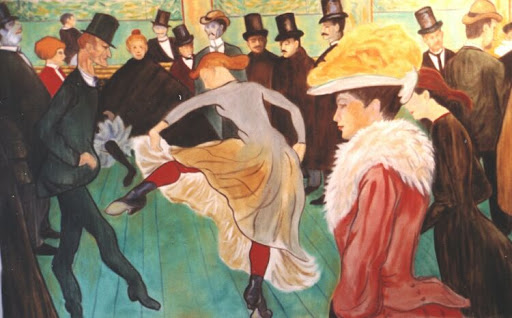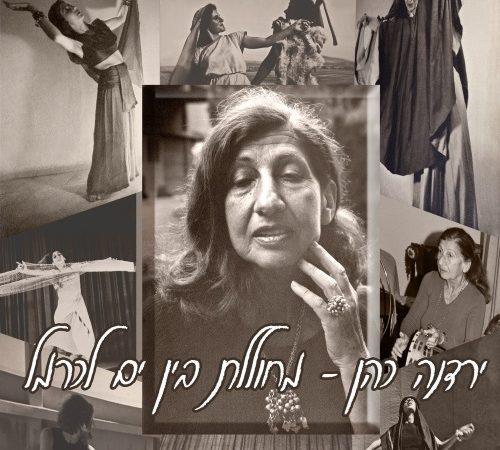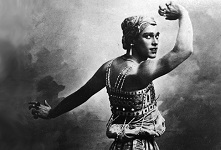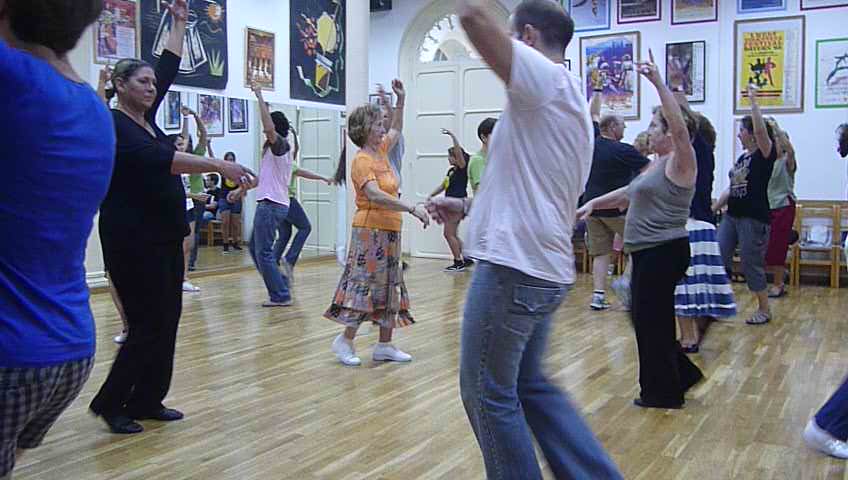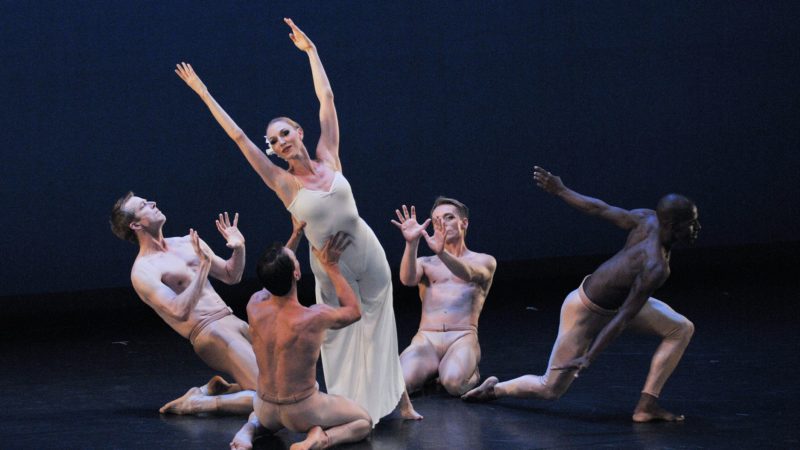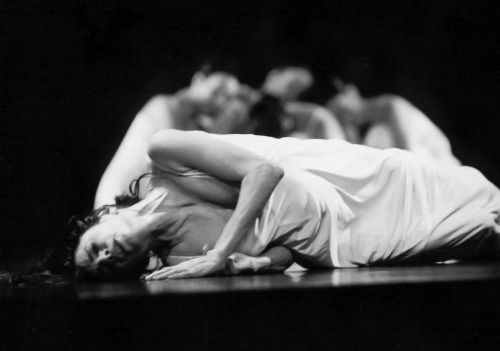All the Options within One Totality – An Interview with Rami Be’er
Rami Be’er, the Kibbutz Dance Company’s choreographer and Artistic Director, is one of the most notable Israeli choreographers. He has developed his own concept of dance, making use of all the theatrical means at his disposal – movement, music, props, costumes and lighting – in order to convey an idea. Since 1990, when he had collaborated with lighting designer Nissan Gelbard, Be’er has been designing the lighting for his own works.
In Be’er’s works, lighting is a major component, focusing and directing the spectator’s gaze to particular events on stage. In my interview with Be’er I inquired how he regards lighting design for dance; what is the nature of the dialogue between lighting and dance. In particular, we spoke of the role of lighting in his dance Screen Saver, and how and why he chose to use video screening.
When you create a dance, what is the relationship between choreography and lighting and design?
When I start a new work, I invest a lot of time in what I call ‘the range of options’ and in the concept; these two are related to each other. I try to define and clarify for myself what it is that I wish to convey. To that end, I enlist all the tools of the stage – with movement as the starting point, naturally. But the space, lighting, music, props, text and costumes are just as important. I try to address each field by itself, while also immediately interweaving it with the other elements. I try to construct an entire concept before I even enter the studio. In the work process, I address each segment from all angles – be it space, music, lighting or movement. What is the ‘range of options’? It is the space, the world, I address. When I enter the studio with the dancers I enter a world that is, even in the work’s initial stages, restricted by space, music, the idiom of movement, and lighting – unlike a choreographer who finished a work and then invites a lighting designer. For me, the role of lighting is very important and dominant; primal. When I hear music, I see in my mind’s eye pictures and movement, and lighting is also part of it.
When I enter the theatre for lighting rehearsals, it is usually for a very long period of time. When working on Screen Saver, we spent a month in the theatre of Kibbutz Kinneret, and there were many trials and many experiments until I was satisfied with the result.
The work on lighting and all the experiments actually took place at the end of the process?
When we started working, I examined the concept very basically – for instance, what do you see when you project from eight different projectors. I had conceptualized the space, the setting and the environment, and then examined how it actually works in reality: what if the light came from here, would that blur the video projection, enhance it, or make it disappear. As it was the first time that I worked with video, I was unfamiliar with many things. The concept I invented – simultaneously screening from eight projectors – is something that I thought of without ever having seen it before. I had to check whether it actually worked.
Haven’t you worked in the past with the lighting designer Nissan Gelbard?
I collaborated with Nissan on my first works. He gave me the tools and the basic concepts of lighting. I was attracted to the field, and later on started doing all the lighting design by myself.
Could you collaborate in the future with a lighting designer, perhaps someone who would have other ideas?
I do not have any principles against collaborating with a lighting designer. But I’ve discovered that for me the lighting is part of a whole, part of what I see in my mind’s eye, and over the years I have gained experience. My knowledge accumulates from work to work, through searching. Just like choreography, one improves and develops through experience.
What are the advantages and disadvantages of being both the choreographer and the lighting designer of the same work?
As I said, for me lighting is part of the basic concept, of the way I see things. In dance, since one sees the entire stage, the eye can roam at will; through lighting I can choose where I want the viewer’s gaze to focus. I can accentuate some things while playing down others, creating a balance in the totality. The lighting is part of the whole composition on stage, which is compounded of movement and space, set and dancers; lighting is one more useful tool for making my point. It may well be that had I created a work and then invited another lighting designer to come up with his own solutions and thoughts, I would suddenly find myself saying: “wow! I hadn’t thought of that, it’s the right solution.” Having designed my own lighting for the past fifteen years, I believe that doing so serves me well in conveying my ideas and making the works whole; but, naturally, this is a subjective view.
Let’s go back to Screen Saver. You direct the viewer’s perceptions with the text you wrote (“Each person has his own ‘Screen Saver’…”) as well as the text you quote (a poem by Yehuda Amichai); you also direct the viewer’s eye, through the lighting, to take a particular ‘journey’. What is the role of the expressive lighting in Screen Saver? How does it help to convey your ideas?
When creating, I naturally have my own reasons for doing this or choosing that. But I don’t expect the viewer to be concerned with questions of intent or symbolism. I am more interested in inviting the viewers on a journey of sorts. When the viewers enter the theater and sit down, they are offered a thread; they are led up to a certain point, from which they are entitled, invited to interpret all they see on stage; to find their own individual interpretation through their own eyes, their own inner world, associations, memories, thoughts, feelings. At the end of the performance they should still have questions and food for thought; not answers and absolutes, but an experience that will accompany them and involve them after having left the theater. That is why I use the word ‘options’ to describe what I convey on stage – there is a variety of possible interpretations and experiences; like any performance, different viewers may have different reactions. I like the range of personal reception options to be a wide-angled personal space.
And yet, you direct the very specifically, politically (in the most general sense)…
I used Amichai’s poem “In the place where we are right”; it may be perceived as political, although it was not written as such.
But being read today…
It is read today; I have chosen it, and it is certainly not there by chance. One of the options is to see it through a political prism, but one may – just as well and at the same time – regard it through the intimate prism of inter-personal relationships.
It is still political
Certainly. It may also be said that everything is political. But I do not wish to speak too much on this point, as that would be an interpretation, enforcing a narrow view: ”This is how I want you to view it, not any other way.” I am more interested in offering options.
In the program you do explain…
Yes, I address the issue. I say a few words about what I think is the right viewpoint, but there are many other reception options. In October we will travel with Screen Saver to the Weimar Festival in Germany. I am very curious as to how people will receive the work elsewhere, in another context, another culture. This work is very precious to me, because of the situation we’re in. I felt the need to touch, to ask questions and present food for thought. I am not a preacher, nor do I wish to educate. I am not naïve as to think that a work of art can change a political and social reality. But it can certainly make some of the spectators experience something and ask themselves questions. The grids created by the beds and the mattresses, as well as the ladders, open a rich ‘range of options’. The beds are the intimacy of home, which may disintegrate; the mattresses are soft and pliant, and yet the dancers continuously throw themselves against them. I use the bed frames to define a territory, a living space, a frame; this frame is breached, and the territory is fought over. In addition, the video allows the viewer to be touched by associations, by things that draw on reality or touch upon it. I use the video (along with the sound, of course) to point the viewer’s associations in a certain direction, while also using it aesthetically; as the images are projected on the human body, the viewers’ associations exceed the visual aspect. The space keeps changing – the beds, the mattresses and all the other elements. In fact, we are all constantly changing.
